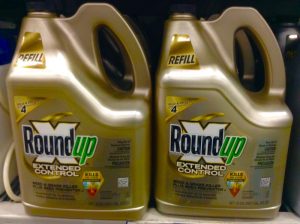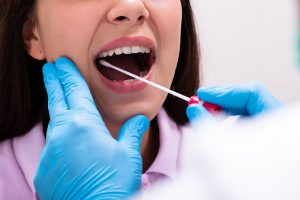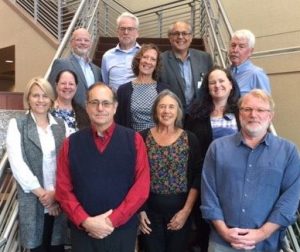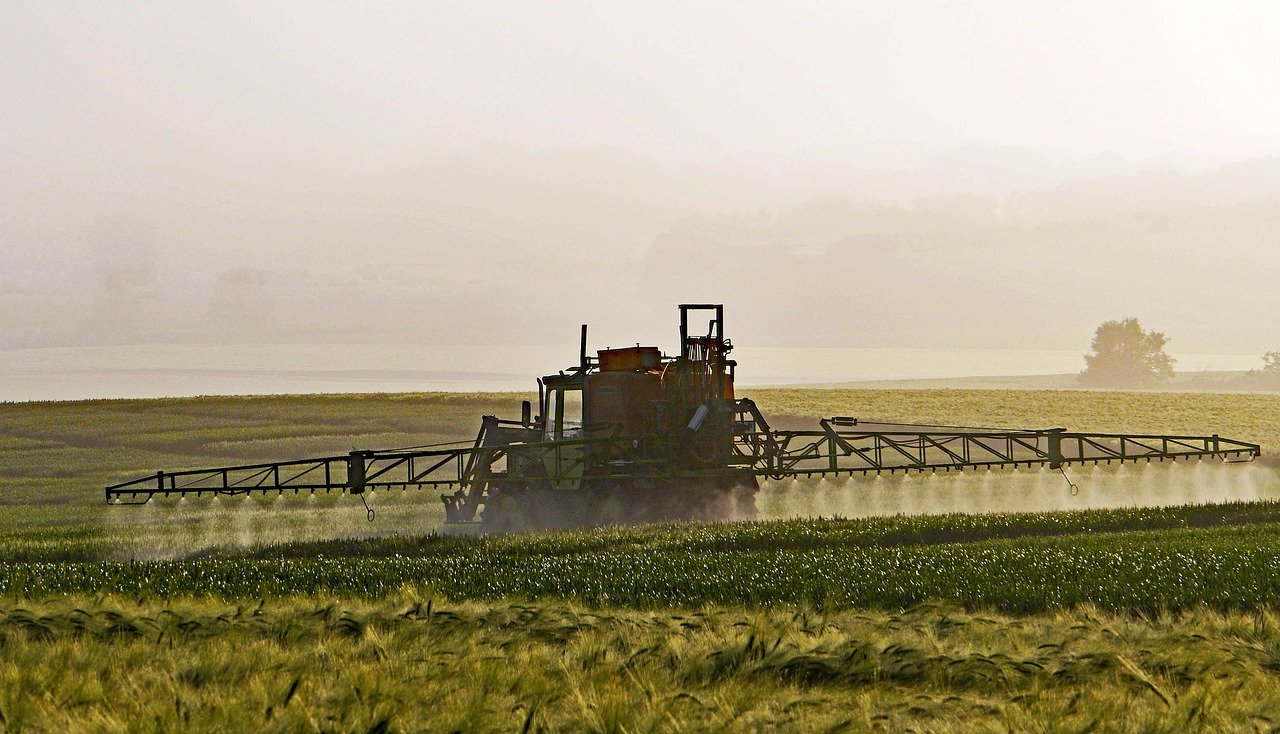One of the main sources of pesticide exposure is through the diet. It is critically…

HHRA Commentary Recommends Four Steps to Fix Systemic Problems with Pesticide Regulation
Scientific uncertainty and controversy go hand-in-hand in our nation’s efforts to prevent adverse public health and environmental impacts from the pesticides applied by farmers, ranchers, foresters, landscapers, and groundskeepers.
Significant progress has been made in the sciences supporting pesticide risk assessment and regulation. But serious gaps persist between real-world adverse outcomes stemming from pesticide use, and the environmental damage and human-health risks that are addressed by the Environmental Protection Agency (EPA) and state regulators.
Too much is expected and too little invested in efforts by scientists inside and outside of EPA working to advance the accuracy of pesticide risk assessments. And the task is getting more complicated and more urgent as a result of steadily rising reliance on pesticides on most conventional farms in the U.S. and worldwide.
One example – the world’s most used herbicide, glyphosate is the active ingredient in the popular line of Roundup herbicides. Shortcomings in glyphosate regulation have allowed high-risk application scenarios to persist, sometimes leading to dangerous exposures. The ongoing legal battle over glyphosate’s role in non-Hodgkin’s lymphoma is one consequence of the failure of Monsanto and EPA to add sufficient warnings and safety requirements on product labels.
Many factors have to be taken into account. Where and how pesticides are applied. How much is applied in what form, and whether levels are building up in the soil, water, or people’s bodies. And why some people are more vulnerable than others, particularly pregnant women, infants, and children, is a critical question that scientists are just beginning to systematically tackle.
We’ve posted an example from our HHRA Talks to the Experts video series about the recommendations from this Commentary. View more videos on our YouTube channel.
We can and must do better. But how?

We suggest four concrete steps in our open-access commentary, “Novel Strategies and New Tools to Curtail the Health Effects of Pesticides,” published on August 3, 2021 in the peer-reviewed journal Environmental Health.
FIRST:
Most of the foundational studies supporting pesticide risk assessments should be carried out by scientists not working for, or aligned with pesticide manufacturers. This vital work should be funded through grants to universities and public research institutions and paid for via pesticide registration fees.
Our commentary explains why this simple, commonsense change is so badly needed.
SECOND:
Accurate estimates of real-world exposures are vital — especially when, like today, overall pesticide reliance is rising and big changes are occurring quickly in the mix of pesticides people are exposed to.

The only way to assure accurate, timely estimates of human exposures is to measure pesticide levels in people. Only governments have the resources to systematically survey pesticide levels in people.
THIRD:
For years regulators and the pesticide industry have highlighted the need for deeper understanding of the mechanisms through which exposures to pesticides can trigger adverse health outcomes. Now that science is doing just that, regulators are reluctant to draw upon cutting-edge research in identifying high-risk pesticide uses. Meanwhile, the pesticide industry argues new research methods focusing on mechanisms at the biochemical and genetic levels are not ready to support regulatory decision making.
This bias against new science must end. Our commentary explains why, and offers pragmatic steps regulators can implement now.
FOURTH:

There is a pressing need for pesticide risk-assessment science to integrate scientific information and tools from multiple disciplines.
Genomic research, in particular, is rapidly advancing our knowledge of how damage occurs. New approaches are deepening understanding that prenatal pesticide exposures can disrupt fetal development and impair newborn intelligence, and/or disrupt behavior, and/or increase the risk of ADHD or autism. Advances in epidemiology can be accelerated through direct measures of exposure in people, as we are doing in The Heartland Study, coupled with identification of new markers of disease from genomics research, such as the work HHRA is supporting at King’s College, London.
Science is moving fast, but pesticide regulatory test requirements and EPA risk assessment science is stuck with methods and data requirements that were not even cutting-edge in the 1980s when they were introduced.
We call on regulators, the industry and the scientific community to fix the widely recognized shortcomings in how pesticide use and risks are studied and regulated. Significant reforms are long overdue. Simple and common-sense changes can make a big difference in identifying and reducing those uses of pesticides that are causing real harm.
More Resources:
- Access the paper “Novel Strategies and New Tools to Curtail the Health Effects of Pesticides”
- Learn about the authors and their roles in the work of the HHRA

The Heartland Study team in October, 2019. - Charles Benbrook; Executive Director
- Melissa J. Perry; Heartland Study Co-Principal Investigator
- Fiorella Belpoggi; Science Advisory Board Member
- Philip J. Landrigan; Science Advisory Board Chair
- Michelle Perro; Science Advisory Board Member
- Daniele Mandrioli; Research Partner, Ramazzini Institute
- Michael N. Antoniou; Research Partner, King’s College London
- Paul Winchester; Heartland Study Co-Principal Investigator
- Robin Mesnage; Research Partner, King’s College London
- Recent published papers, stories and reports describing the problems addressed in the Commentary
- Environmental Health News opinion piece by co-authors Dr. Phil Landrigan and HHRA Executive Director Charles Benbrook; “To get high-risk pesticides out of our bodies, insulate the EPA from politics and follow the science;” August 3, 2021.
- Heartland Study co-Principal Investigator Dr. Melissa Perry opinion piece in The Hill; “Congress must act to keep us safe from high-risk pesticides;” August 3, 2021.
- Glyphosate Girl blog on the commentary; “An EPA Gut Intervention;” August 3, 2021.
- HHRA Talks to the Experts videos on the commentary recommendation on our YouTube channel
- Lerner, Sharon; “The Department of Yes: How Pesticide Companies Corrupted the EPA and Poisoned America;” The Intercept, June 30, 2021.
- Mesnage, R., Benbrook, C., & Antoniou, M. N.; “Insight into the confusion over surfactant co-formulants in glyphosate-based herbicides;” Food and Chemical Toxicology, 2019, 128, 137-145.
- Benbrook, Charles; “Shining a Light on Glyphosate-Based Herbicide Hazard, Exposures and Risk: Role of Non-Hodgkin Lymphoma Litigation in the USA;” European Journal of Risk Regulation, 2020, 11(3), 498-519.
- Benbrook, Charles M., “How did the US EPA and IARC reach diametrically opposed conclusions on the genotoxicity of glyphosate-based herbicides?,” Environmental Sciences Europe, 2019, 31(1),
- von Ehrenstein, O. S., Ling, C., Cui, X., Cockburn, M., Park, A. S., Yu, F., Wu, J., & Ritz, B., “Prenatal and infant exposure to ambient pesticides and autism spectrum disorder in children: population based case-control study,” BMJ, 2019, 364, l962.
- Silver, M. K., Fernandez, J., Tang, J., McDade, A., Sabino, J., Rosario, Z., Velez Vega, C., Alshawabkeh, A., Cordero, J. F., & Meeker, J. D.; “Prenatal Exposure to Glyphosate and Its Environmental Degradate, Aminomethylphosphonic Acid (AMPA), and Preterm Birth: A Nested Case-Control Study in the PROTECT Cohort (Puerto Rico);” Environmental Health Perspectives, 2021, 129(5), 57011.
- Mesnage, R, Teixeira, M, Mandrioli, D., Falcioni, L., Ducarmon, QR, Zwittink, RD, Mazzacuva, F, Caldwell, A, Halket, J, Amiel, C., Panoff, J. , Belpoggi, F., & Antoniou, MN; “Use of shotgun metagenomics and metabolomics to evaluate the impact of glyphosate or Roundup MON 52276 on the gut microbiota and serum metabolome of Sprague-Dawley rats;” Environmental Health Perspectives, 2021 (in press). And the blog that interprets this paper.



